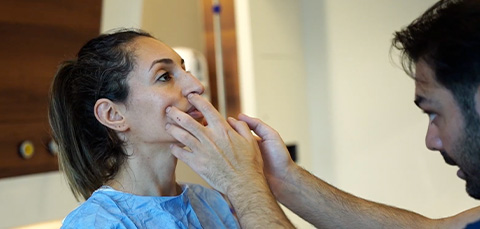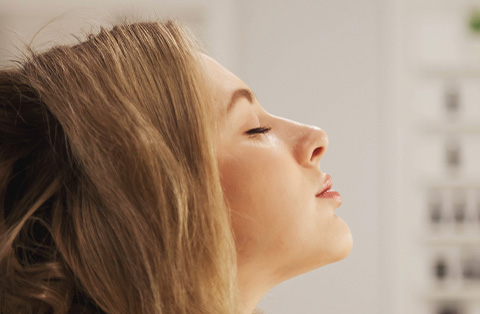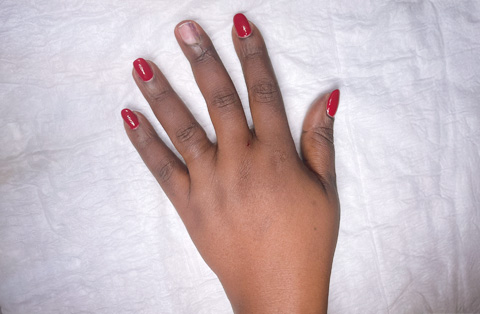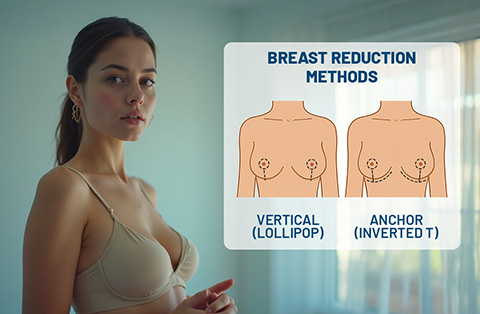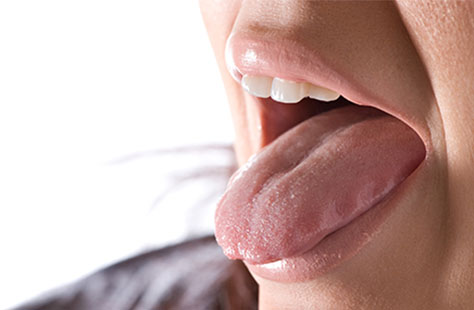Rhinoplasty is a common but complex procedure that heals in stages, within a generally predictable timeline. In our plastic surgery practice serving all over the world, we have done thousands of rhinoplasties.
We have a lot of experience in this procedure. We know a lot about how to help patients during the healing process and what they should and shouldn’t do afterwards. This helps them get the best results quickly.
What is rhinoplasty?
Rhinoplasty, also called a “nose job,” is a surgery that changes the appearance or function of the nose. Rhinoplasty is a surgery that can greatly change how someone looks and improve their life, whether for beauty or health reasons.
What to expect from a rhinoplasty procedure
A typical rhinoplasty procedure involves making incisions to access the bones and cartilage that form the structure of your nose. The surgeon then reshapes the bone, cartilage, or both, to refine the shape or function of the nose. It’s an outpatient procedure, usually under general anesthesia, that can take between one to three hours, depending on complexity.
Knowing that, like any surgical procedure, rhinoplasty entails a recovery period characterized by swelling, is important. Understanding these rhinoplasty swelling stages is key to a smooth recovery journey.
The swelling stages of Rhinoplasty
After the rhinoplasty procedure, you may experience varying degrees of swelling, a natural part of your body’s healing process. We can divide these rhinoplasty swelling stages into five distinct periods.
Rhinoplasty recovery timeline
1 Week After Rhinoplasty
The first week post-rhinoplasty is generally the period of maximum swelling and discomfort. Your nose might appear considerably larger than expected due to swelling. Bruising around the eyes is common, and the nasal tip might seem unnaturally upturned. Rest assured, these are all typical characteristics of the 1-week rhinoplasty swelling stage.
2 Weeks After Rhinoplasty
By the second week, noticeable improvement should be apparent. The initial heavy swelling and bruising begin to subside, with around 60-70% of the swelling typically gone. However, the nasal tip might remain swollen, a standard feature of the rhinoplasty tip swelling stages.
4-6 Weeks After Rhinoplasty
At this stage, the majority of swelling (about 80%) should have subsided. The nose looks better and you can see some changes, but there might still be some swelling, especially at the tip.
2-3 Months After Rhinoplasty
Further refinement in swelling occurs at this stage. Subtle swelling persists, particularly in the nasal tip area, which is usually perceptible only to you and your surgeon.
6-12 Months After Rhinoplasty
During this period, the last remnants of swelling slowly diminish. The final result of your rhinoplasty starts to shine through as the nose reaches its ultimate shape. However, minor swelling, especially in the nasal tip, may continue up to a year (or sometimes longer) in some cases.
Will I need a rhinoplasty revision surgery?
Sometimes, people may require a second surgery after rhinoplasty for two reasons. The first reason is if they are unsatisfied with the appearance of their nose. The second reason is if they continue to experience difficulties with breathing. Surgeons typically make revision surgery decisions after the 1-year mark, when all swelling has subsided, and the final result is evident.
Is nose tip swelling normal?
Yes, it is perfectly normal and, in fact, expected. The tip of the nose stays swollen longer because it has more soft tissues packed together.
Is face swelling normal after rhinoplasty?
It’s not uncommon for patients to experience mild swelling and bruising around the eyes and cheeks following rhinoplasty. This usually subsides within the first two weeks.
How to Help Swelling After Rhinoplasty
You can take steps to minimize and manage swelling. To recover, keep your head up. Use cold packs, drink water, and eat anti-inflammatory foods. Avoid hard activities for a few weeks.
Do I need a rhinoplasty plastic surgeon near me?
While it’s not mandatory, having a rhinoplasty surgeon close to you can be beneficial. It facilitates the process of follow-up visits and enables prompt addressing of any concerns. However, the surgeon’s expertise should be your primary consideration.
Conclusion
Knowing the stages of swelling after rhinoplasty helps you understand healing time, have realistic expectations, and recover more easily. Always consult a certified plastic surgeon for a clear understanding of the rhinoplasty procedure and what to expect.
Choosing a skilled surgeon can improve your looks and make you feel more confident. Your new journey awaits!
What are the worst days of swelling after rhinoplasty?
What are the worst days of swelling after rhinoplasty?
The worst swelling generally occurs in the first week following a rhinoplasty, peaking around the second or third day post-surgery. This is when the nose may appear noticeably larger and more swollen than usual.
Does drinking water reduce swelling after rhinoplasty?
Yes, staying well-hydrated can aid in reducing swelling after rhinoplasty. Water helps remove toxins, improve circulation, speed up healing, and reduce swelling in the body.
Why is my tip bulbous after rhinoplasty?
A bulbous tip immediately following rhinoplasty is quite common and is generally due to swelling. The tip of your nose has soft tissue.
This tissue holds onto fluid. As a result, the tip of your nose stays swollen for a longer time than other parts. As healing progresses over several months, this swelling should subside, revealing a more refined shape.
How long will my nose look big after rhinoplasty?
Swelling makes the nose appear larger than its final size after rhinoplasty. This is most noticeable in the first week and gradually reduces over the next several weeks. By about 4 to 6 weeks post-surgery, you should see significant reduction in swelling. Sometimes, the nose may stay slightly swollen for a year or more, which can slightly change how big it looks.
Does tip always drop after rhinoplasty?
Yes, it’s normal for the nasal tip to “drop” or descend slightly as swelling subsides and the tissues settle. This generally happens within the first few months after surgery. The extent of the drop can vary based on surgical technique, individual healing process, and the thickness of the nasal skin.
What foods reduce swelling after rhinoplasty?
Anti-inflammatory foods can help reduce swelling after rhinoplasty. Eat foods with omega-3 fats (like fish, flaxseed, and walnuts), fruits and veggies with antioxidants, and spices like turmeric and ginger. Also, it is best to avoid salty foods as they can worsen swelling.
Do eyes look bigger after rhinoplasty?
Rhinoplasty itself doesn’t directly affect the size of your eyes. Changes in your nose can affect the balance of your face, making your eyes look bigger.
How long does it take to see final results of rhinoplasty?
You may notice improvement within 2 to 3 months after rhinoplasty. However, it may take a year or even longer to see the final results. This allows time for all swelling to resolve and for the tissues to settle into their new shape.
Should I massage my tip after rhinoplasty?
It’s essential to follow your surgeon’s specific advice about post-operative care, including massaging. Some surgeons recommend gentle massage as a way to facilitate healing and reduce swelling, while others may not. Always consult your surgeon before attempting any post-operative care technique.
What does swelling feel like after rhinoplasty?
Post-rhinoplasty swelling can feel like a sense of fullness or tightness in your nose and surrounding facial areas. Some patients also report a feeling of heaviness, especially in the first week after surgery. It’s generally not painful but can cause some discomfort. Over time, as the swelling reduces, this feeling will gradually diminish.
